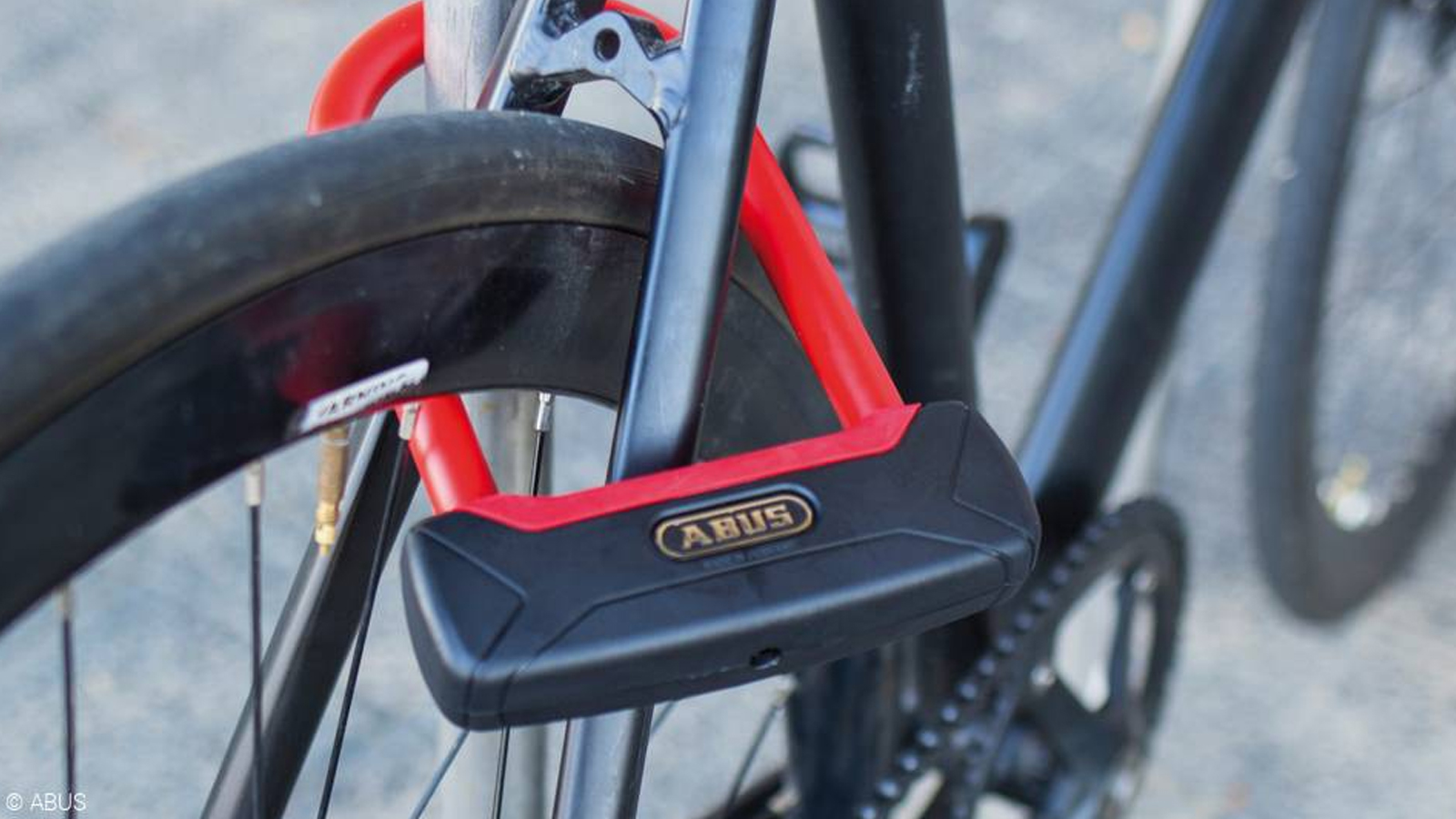
The question of how to lock a bike may seem obvious, but there are a number of pitfalls that, even if you've used the best bike locks available, may mean that your bike is still vulnerable to theft.
Each year in the UK there are over 100,000 bikes stolen, while in the US and Canada, the number is estimated at over 2,000,000. Those are absolutely massive numbers and the percentage of returned bikes is minuscule in comparison.
Knowing how to use a bike lock properly will help ensure that you don't become part of those statistics. Using more than one bike lock will make it more difficult for a thief, so rather than one lock, it might be worth investing in a couple of quality locks to secure the different parts of your bike, as we explain below.
Consider where you lock your bike too. There's safety in numbers and if your bike is the best secured in a location where multiple bikes are locked up, it's unlikely that a thief will target yours over more easily stolen bikes.
A special word if you ride an electric bike. Ebikes are high value items, so it's worth investing a little more in one of the best ebike locks to keep your electric bike safe.
How to choose the right bike lock
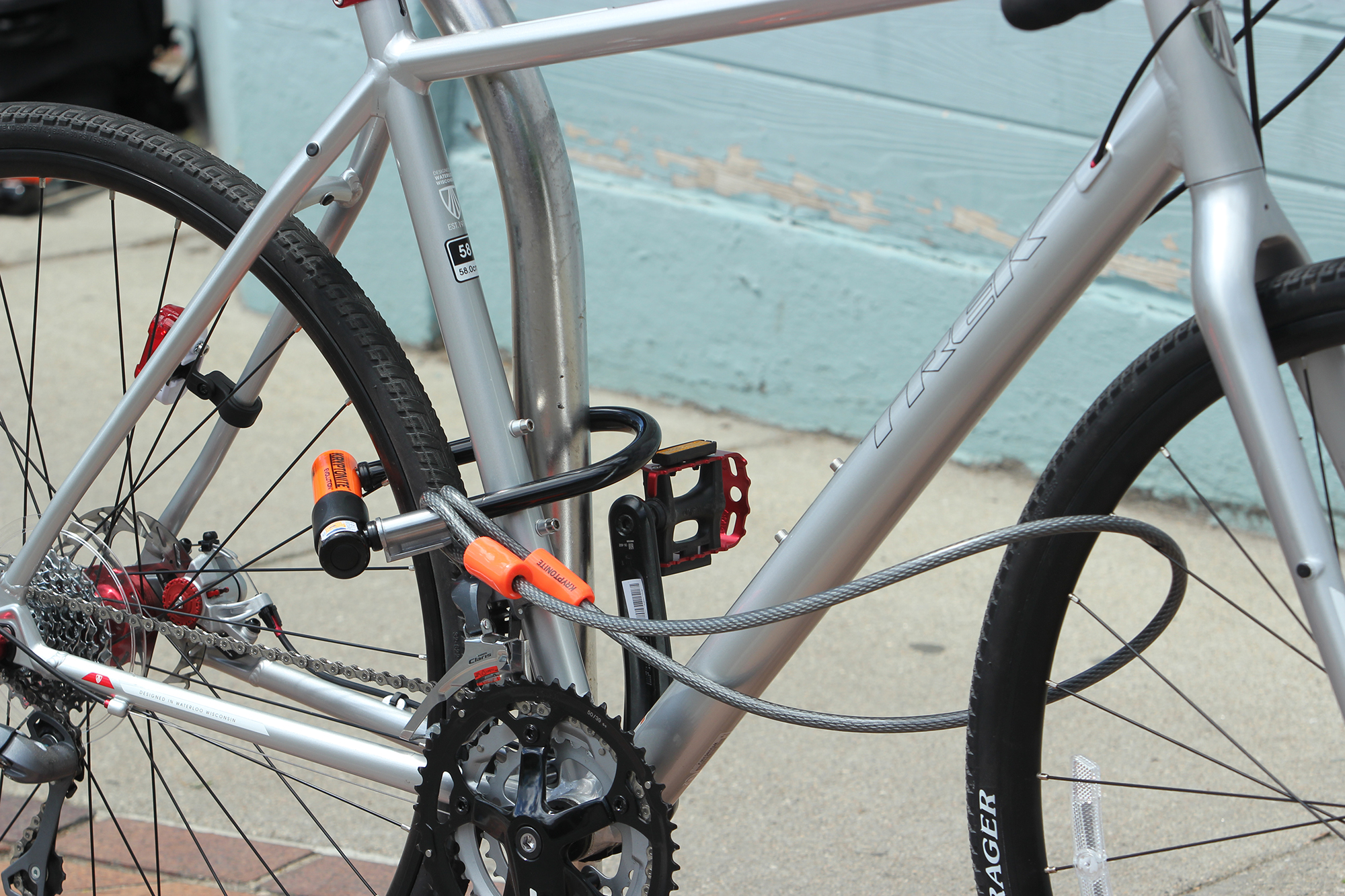
Start by considering what level of security you need. A bike left outside overnight needs a different level of security to a bike locked for 15 minutes in a busy area during the day. When considering your needs, remember that it doesn't hurt anyone to overdo it.
It's an obvious statement to say the best bike locks are going to be the most secure but that's only true if they're going to get used. A higher security lock will be bulkier and heavier and if it gets left at home as a result, it won't do much good.
The latest race content, interviews, features, reviews and expert buying guides, direct to your inbox!
On the other end of the spectrum, there is a minimum level of advisable security. Cable locks are available for sale but should only be a secondary security measure. Cutting a cable lock is so easy and quick that it's possible in broad daylight with people nearby. Don't trust your bike to a cable lock alone in any situation.
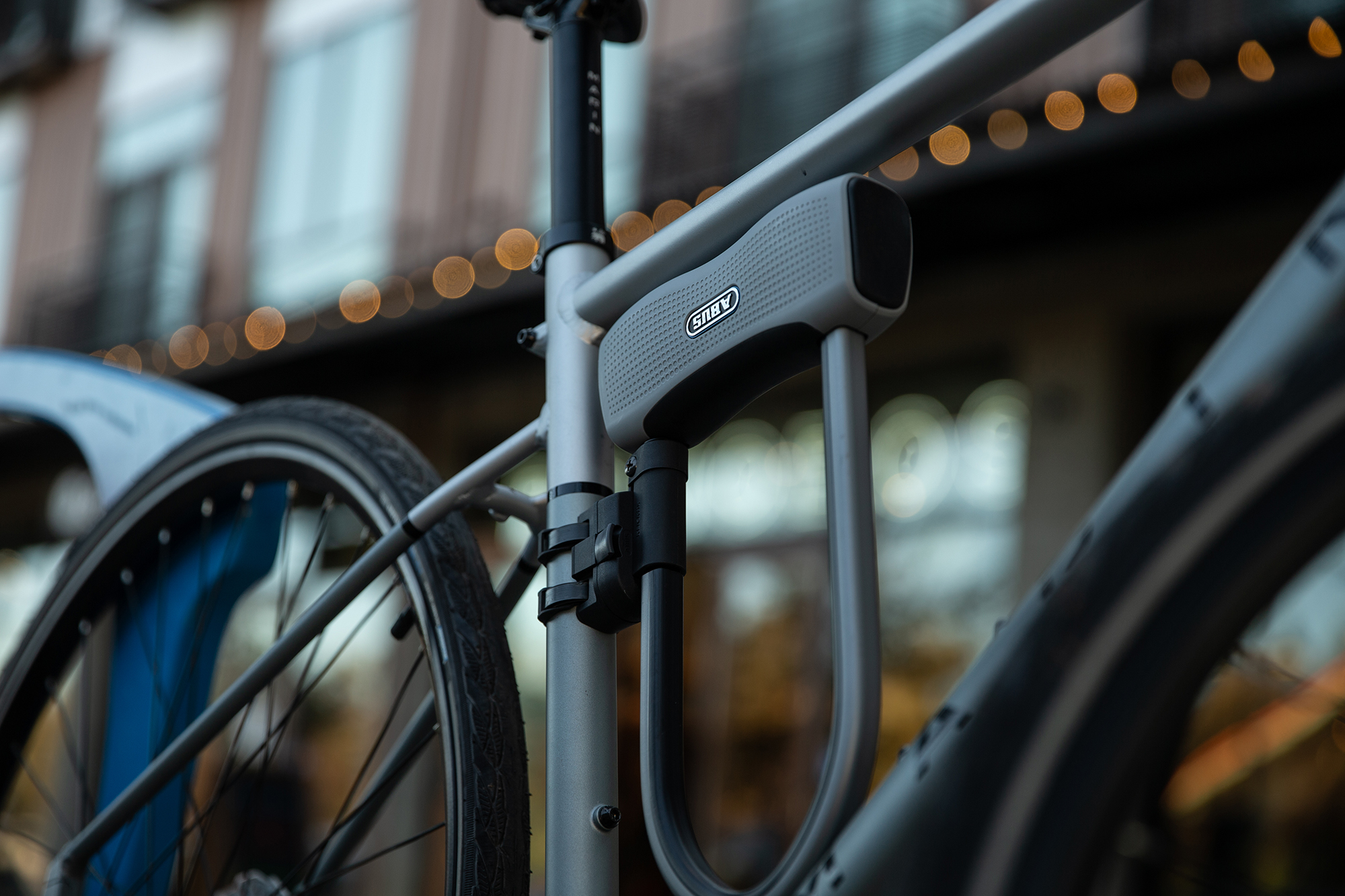
Look out for security ratings for bike locks. In the UK, most bike locks are Sold Secure rated. Sold Secure is an independent lock testing organisation which tests locks submitted to it by manufacturers and rates them for how easy they are to break. The highest rating is Sold Secure Diamond, followed by Gold, Silver and Bronze and Sold Secure offers advice on which level of security is appropriate for different situations.
It's worth remembering that most of the best bike insurance policies will only cover you if you can prove that your bike was locked up correctly using a bike lock with a specified Sold Secure rating.
Types of bike lock
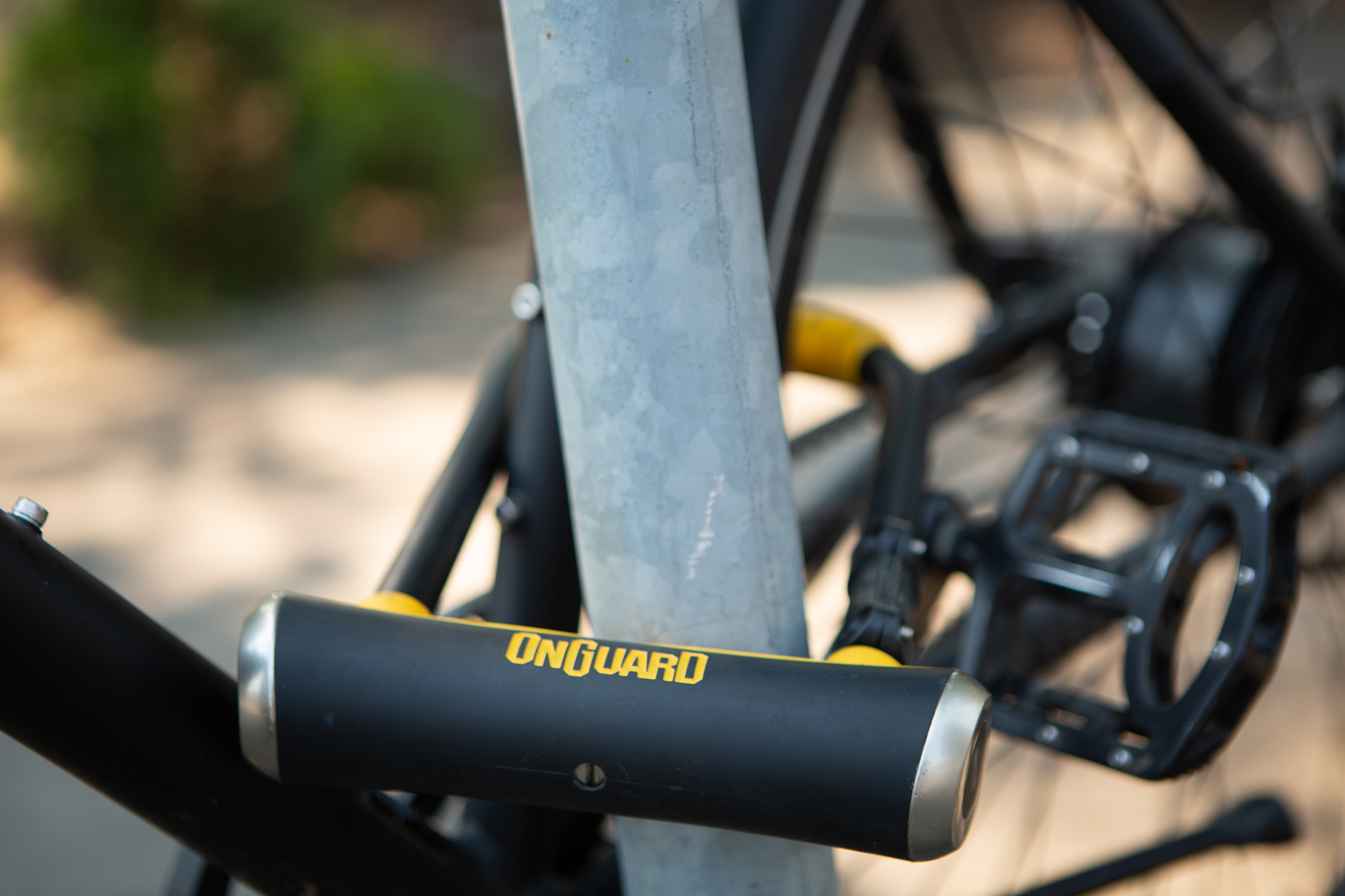
The most common high security bike lock is the D-lock (aka U-lock), where a solid U-shaped shackle is attached to a locking bar. The shackle is hard to attack and the lock in the bar can be made robust, but D-locks are heavy and bulky to carry. The Hiplok D1000 is a D-lock we rated highly.
The best chain locks, like the Hiplok Gold approach D-locks in security, although there are more points of attack, so less robust chain locks tend to be more vulnerable than D-locks. A good chain lock will still be heavy, but it's more packable and easier to use than a D-lock. We've got a comparison of the pros and cons of a chain lock vs U lock if you want to read more.
Folding locks with jointed segments to the shackle, like the Abus Bordo Lite are also easier to carry than D-locks. Again, a good quality lock will be heavy and, unlike D-locks, they're vulnerable to attack at the joints.
Cable locks are easy to carry. Many cheaper locks use cables, but the best budget bike locks avoid using a cable, as it's much easier to cut through than other types of lock.
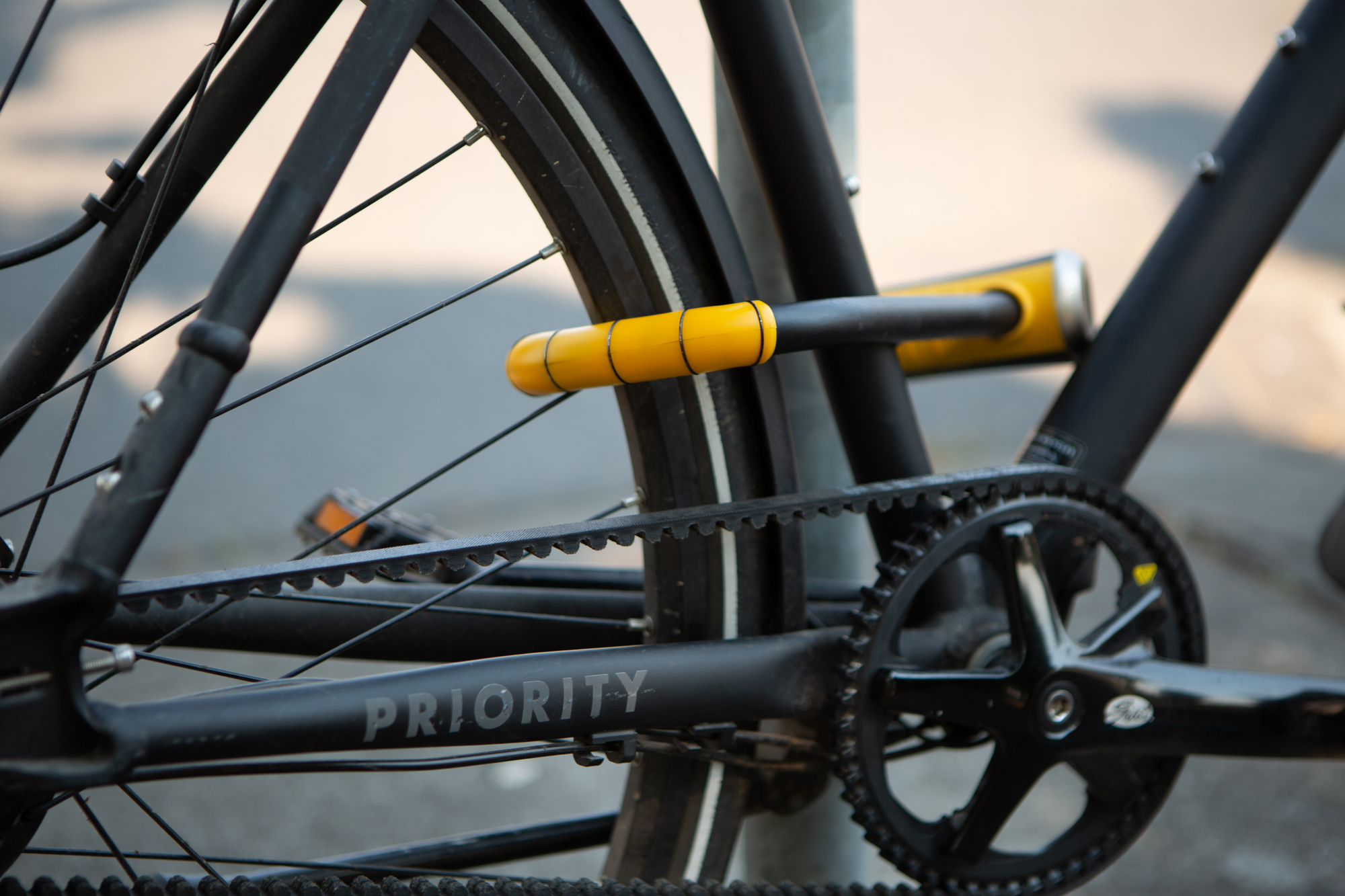
There are a number of very portable locks available, which you can easily take in a pocket or pack. The best lightweight bike locks may not resist a thief with the right tools, but properly used may stop someone from walking off with your bike while you've stopped to get a coffee.
As an extra measure of security, some locks like the Abus Bordo SmartX lock have an alarm which will sound an alert if the lock detects that it's being moved, followed by a full-scale siren alarm if the movement or tampering continues. You can also buy separate bike alarms like the Alterlock.
How to choose the right place to lock your bike
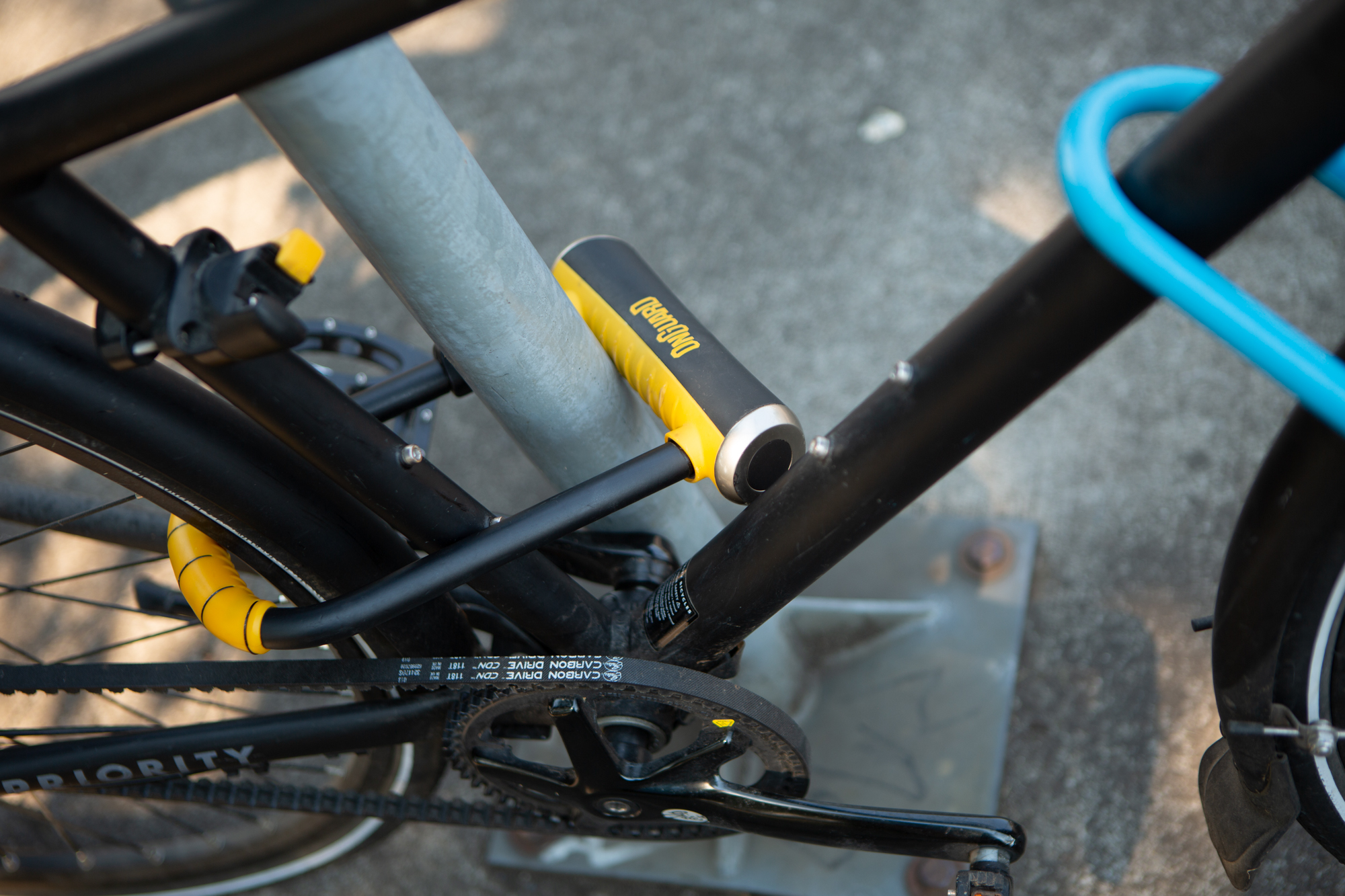
Bike thieves are fast and well-practised. A crowd will only provide security if you've chosen a good lock and attached it to a solid object. Remember to always choose an object that isn't easy to cut or move. Make sure there's no way to lift the bike and lock off of the anchor you've chosen.
In busy areas, you might have to deal with congestion at the best places to lock a bike, such as at the train station. Just like you'd never want to park a car too close you want to be aware of other people when you lock your bike. Never lock your bike to someone else's, and never lock it so close that they can't get their bike free without damaging yours, theirs, or both.
How to use your lock correctly
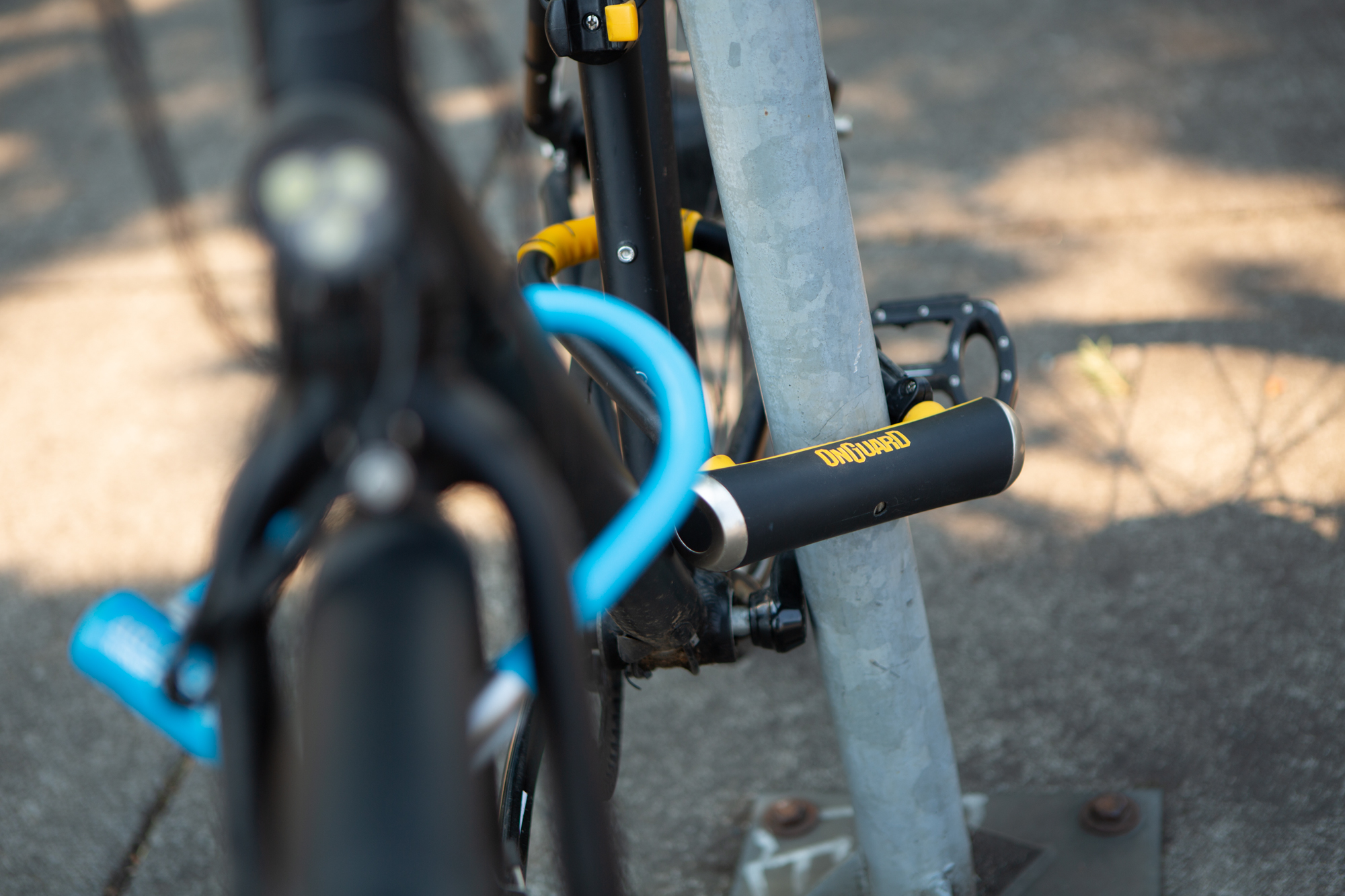
Anything on your bike is up for grabs in the right situation and you can't lock everything. The rear wheel and the frame are the most expensive pieces so start there. In most situations, you'll be able to attach a U-lock to your chosen anchor, the rear wheel, and the frame. Then use a cable lock or a second U-lock for extra security on the front wheel. Ideally loop this lock through the front wheel and the front of the frame and attach it to a separate anchor.
Also, be sure to get a tight fit between the lock and bike. Leaving a lot of room inside the lock makes it easier for a thief to get the leverage needed to break it. Buy the right size lock and attach it so it's tight. Angle the lock barrel so that it's hard to access, as this is usually the point of greatest vulnerability.
Always double-check that you've remembered to attach to the anchor. Carefully threading a lock through the wheel and frame and then missing the anchor is an easy mistake.
Home isn’t safe
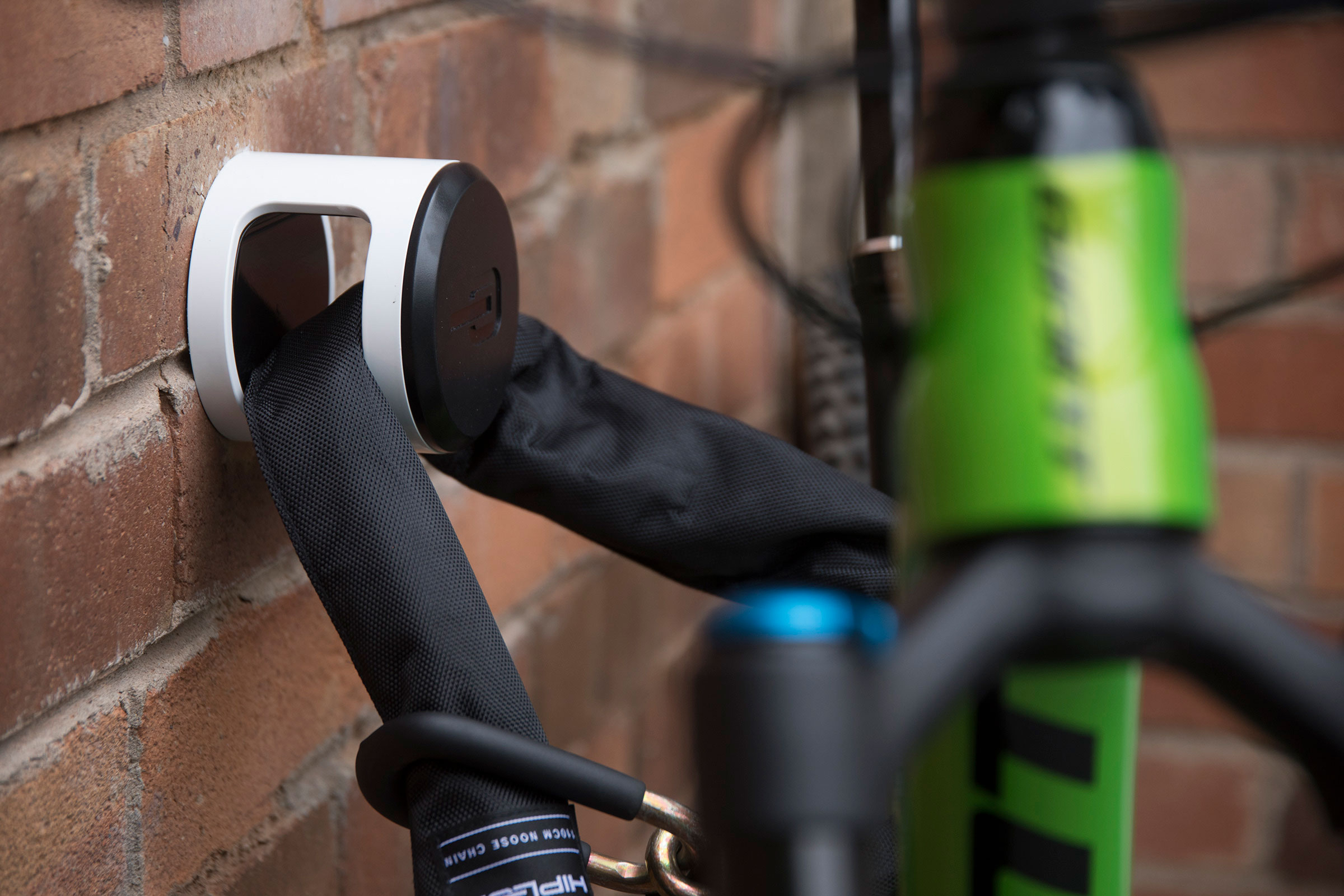
You've been careful to always use a good lock and use it with solid anchors when leaving the bike at the train station. But just because you made it home, it doesn't mean you can let your guard down. The number one place bikes get stolen is at home and most of the time that means a garage or shed. Like anywhere else in the world, it's important to use a good lock and attach it to a secure anchor.
Lock your bike storage and also consider a shed alarm, security lighting or CCTV coverage to deter a thief.
Do more than just lock your bike
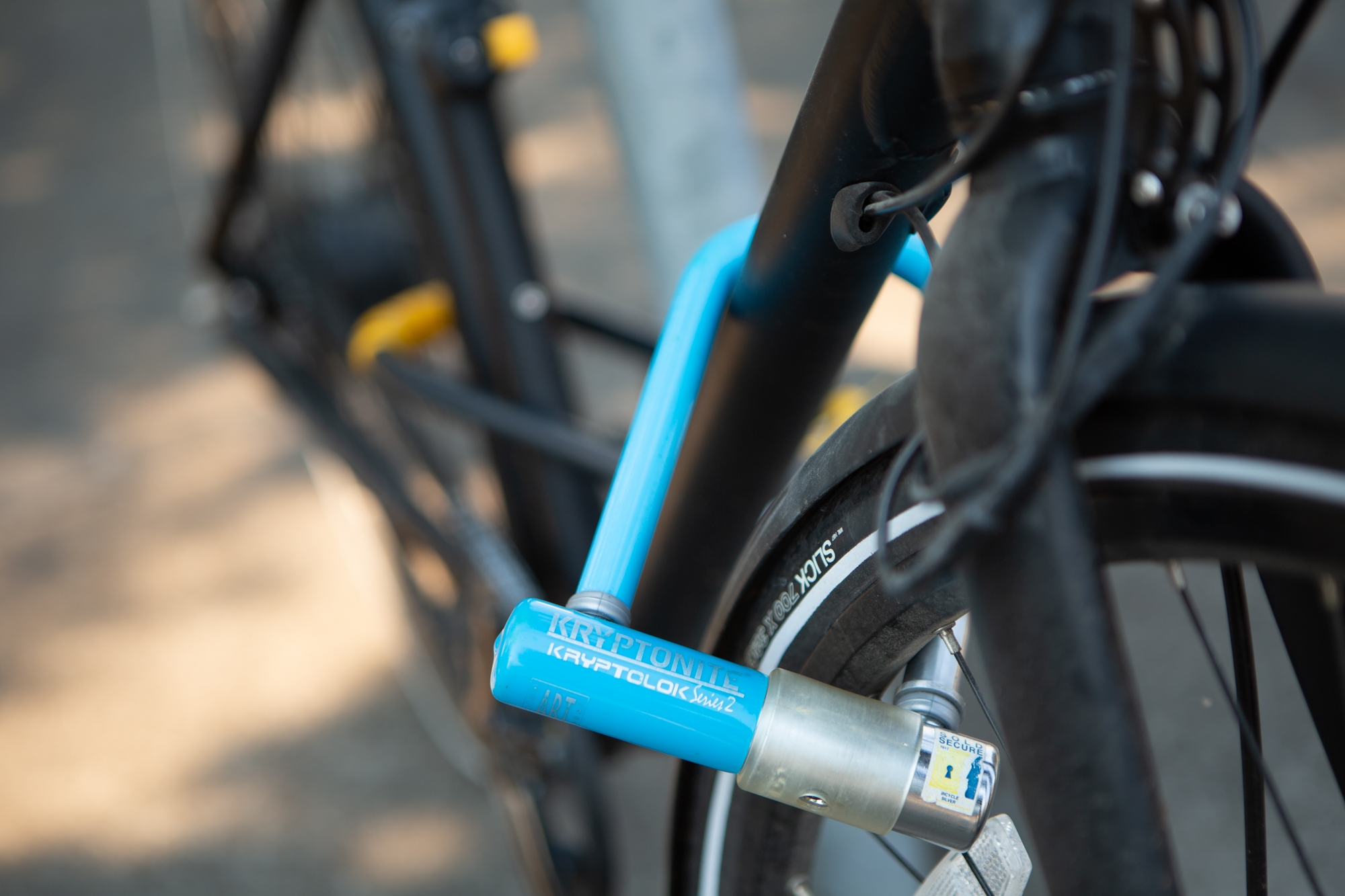
Even when you've done everything you can your bike might still get stolen. If that happens one of the most important things you can do is report it stolen and include the bike's frame number (or serial number) in the report. While the percentage of returned bikes is low, police do sometimes find them.
When you get a new bike, record the serial number in a secure location and photograph the bike and any unique features like replacement handlebars or wheels. In the event a bike ends up in police custody, they will check the serial number to see if the owner has reported it stolen. If you haven't provided the serial number the chances of it getting back are even lower.
Get your bike security marked. In the UK, this service is provided by Bike Register, who will provide you with a set of tamperproof registration stickers to put on your bikes, and even individual components. There are similar services available in the US and Australia.
If the police do retrieve a stolen bike, registration makes it much easier to reunite it with the owner, and it is also a simple proof of ownership. It makes it a lot harder for a thief to sell a stolen bike too.
Josh hails from the Pacific Northwest of the United States but would prefer riding through the desert than the rain. He will happily talk for hours about the minutiae of cycling tech but also has an understanding that most people just want things to work. He is a road cyclist at heart and doesn't care much if those roads are paved, dirt, or digital. Although he rarely races, if you ask him to ride from sunrise to sunset the answer will be yes.
Height: 5'9"
Weight: 140 lb.
Rides: Salsa Warbird, Cannondale CAAD9, Enve Melee, Look 795 Blade RS, Priority Continuum Onyx

